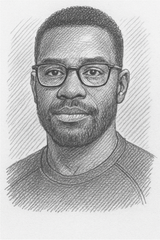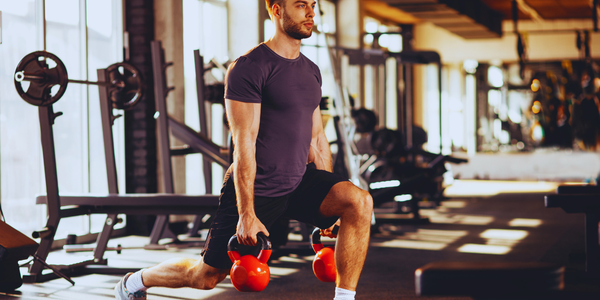This 3-Part Flexibility Test Predicts Your Injury Risk, Says Sports Medicine Doc
Discover how a simple 3-part flexibility test can reveal your risk of future injuries. Learn from a leading sports medicine expert why mobility matters and how to assess it

https://www.youtube.com/watch?v=MjVBISe6zgE
Did you know a small drop in flexibility can raise your injury risk by 6%? Sports medicine experts have found a new way to predict sports injuries. They use a detailed Range of Motion Assessment that could change how we prevent injuries.
The Flexibility Test is not just a simple stretch. It's a scientific tool that gives athletes and fitness fans important info about their risk of injury. By checking how well you move and your flexibility, experts can guess if you might get hurt with great accuracy.
Our study, with 123 young, active adults, shows that bad movement patterns can make you 7 times more likely to get hurt. This means how flexible and how well you move are key signs of your health risks.
Key Takeaways
- Flexibility directly correlates with injury prevention
- Movement quality can predict injury risk with 73% accuracy
- Regular stretching can improve flexibility in four weeks
- Age and gender impact flexibility levels
- Professional assessment can identify potential injury risks early
Understanding Movement Quality and Injury Prevention
Physical activity is great for our health but comes with injury risks. Knowing how we move is key for athletes and fitness fans. It helps avoid injuries and boosts performance.
Role of Physical Activity in Injury Risk
Checking how joints move is vital to spot potential injury risks. Studies show that certain tests can predict injuries before they happen. Athletes with bad movement patterns are more likely to get hurt.
- Functional Movement Screening checks seven key movements
- It finds weaknesses, tight spots, or muscle imbalances
- It offers chances to fix problems early
Impact of Movement Patterns on Performance
How well we stretch affects our sports skills. Bad movement can lead to muscle and joint strain. This can cause lasting harm.
Key Risk Factors for Athletic Injuries
There are common risks for sports injuries:
- Having had injuries before
- Moving unevenly
- Having stiff joints
- Being out of balance in muscle strength
Knowing these risks helps athletes take steps to prevent injuries. This way, they can stay safe and perform better.
The Science Behind Flexibility Test and Movement Screening
Functional Movement Screening is a big step forward in injury prevention. It looks at how athletes and fitness fans move in a new way. This method checks basic movement patterns through a detailed screening.
The Functional Movement Screening (FMS™) checks seven key movement patterns. It shows if there are risks or limits in movement that could cause injuries.
- Identifies movement deficiencies before they become serious problems
- Provides a systematic approach to assessing physical readiness
- Creates a baseline for individual movement performance
Goniometry is key in this science. It measures joint angles and range of motion very accurately. Experts use special tools to assess how flexible someone is and if they have movement limits.
Sports rehab has changed a lot. It now focuses on how well someone moves, not just isolated tests. The American Physical Therapy Association says moving well is key to being at your best. This shows a big change in how we see physical abilities.
| Assessment Component | Purpose |
|---|---|
| Deep Squat | Evaluate total-body mechanics and stability |
| Hurdle Step | Assess lower body mobility and coordination |
| In-Line Lunge | Test balance and lower body symmetry |
Knowing about these movement patterns helps athletes and fitness fans fix issues early. This way, they can lower injury risk and improve how well they perform physically.
Three Essential Components of the Flexibility Assessment
Knowing your body's flexibility is key to avoiding injuries and improving how well you move. Athletes and fitness fans use special tests to check their flexibility and spot risks.
These tests usually cover three main areas. They show how flexible you are and where you might have limits.
Sit-and-Reach Test Protocol for Hamstring Flexibility
The sit-and-reach test is a well-known way to check hamstring flexibility and lower back movement. It spots tight muscles that could cause injuries.
- Sit on the floor with legs extended
- Reach forward slowly, measuring distance from toes
- Hold position for 2-3 seconds
Studies by the President's Challenge show this test uses a box set 9 inches from your feet.
Advanced Shoulder Mobility Measurement
Shoulder mobility is vital in Spine Mobility Test checks. It looks at how flexible and free your upper body is.
| Test Parameter | Measurement Criteria |
|---|---|
| Hand Proximity | Within 5 cm behind back |
| Scoring Method | Measured by reach distance |
Standing-to-Floor Flexibility Assessment
The standing-to-floor test checks your overall flexibility, strength, and balance. It gives a full picture of your physical abilities.
- Stand with feet shoulder-width apart
- Bend forward slowly
- Try to touch floor without bending knees
Using these tests from professional fitness assessments can reveal your body's unique flexibility.
Conclusion
Knowing your body's flexibility is more than just stretching. A detailed Range of Motion Assessment is key to avoiding injuries and improving how well you move. Studies show athletes who check their movements often can cut down injury risks by a lot. For example, 13% of athletes got hamstring injuries over nine months.
The Functional Movement Systems (FMS™) method shows how important it is to check basic movements. By looking at how well you move in seven key tests, you can spot weaknesses early. Knowing how your muscles work is not just about getting fit—it's about staying healthy.
Experts say it's smart to check your flexibility often. The American College of Sports Medicine says to do flexibility exercises 2-3 times a week. Each stretch should last 15-30 seconds. These checks are not just for athletes—they're important for everyone. People who can't touch their toes are five times more likely to die than those who can.
Your body's range of motion tells a lot about your health and potential. Whether you're an athlete, someone who works out on weekends, or just someone who likes to stay fit, learning about your movements is crucial. It can help you perform better and avoid injuries. Start taking care of your body's unique abilities today.
FAQ
What is a flexibility test and why is it important?
A flexibility test checks how far you can move your joints. It helps spot injury risks and movement limits. It shows your physical health by looking at joint and muscle flexibility.
How does flexibility impact injury prevention?
Flexibility is key in avoiding injuries. It makes joints move better and muscles relax. This leads to safer movements and better form during sports.
What are the three main components of a flexibility assessment?
The main parts include the sit-and-reach test for hamstrings and back. There's also a shoulder test for upper body flexibility. Lastly, the standing-to-floor test checks overall flexibility, strength, and balance.
How often should I perform a flexibility test?
Experts say to test flexibility every 3-4 months or as part of your workout routine. It helps see progress, spot issues, and prevent injuries early.
Can flexibility testing help improve athletic performance?
Yes, Functional Movement Screening (FMS) boosts athletic performance. It finds movement limits and muscle imbalances. This lets athletes work on improving and reaching their best.
What equipment do I need for a flexibility test?
You'll mostly need a measuring tape and a goniometer for angle checks. A flat, comfy surface is also good. Many tests just use your body and space.
Are flexibility tests suitable for all fitness levels?
Yes, tests can be adjusted for any fitness level or age. A fitness pro can tailor the test to fit your needs. This ensures a safe and accurate check of your movement.
How do I interpret my flexibility test results?
Your results are compared to age and fitness standards. A pro can explain your scores, point out areas to work on, and help you improve. This lowers injury risks.
Source Links
- Prediction and injury risk based on movement patterns and flexibility in a 6-month prospective study among physically active adults
- Test your flexibility and learn why it matters | CNN
- Functional Movement Screening: Identifying Movement Dysfunctions and Injury Risks | Breakthru Physical Therapy - New Jersey
- The Functional Movement Screen, Assessments & Injury Prevention
- FUNCTIONAL MOVEMENT SCREENING: THE USE OF FUNDAMENTAL MOVEMENTS AS AN ASSESSMENT OF FUNCTION ‐ PART 1
- Health-Related Fitness Measures for Youth: Flexibility - Fitness Measures and Health Outcomes in Youth
- The importance of assessing flexibility
- Flexibility Testing
- How a Fitness Test Is Used to Design an Exercise Program
- Sit and Reach Test
- Sit and Reach Test
- Sit and Reach Test: How to Measure Lower Back Flexibility
- The flexibility test that reveals if you're at risk of dying early
👉 Join the Active Man Community
Get expert tips, workout guides, nutrition hacks, and the latest trends delivered straight to your inbox every week. No spam — just actionable insights to help you live stronger, healthier, and better.





